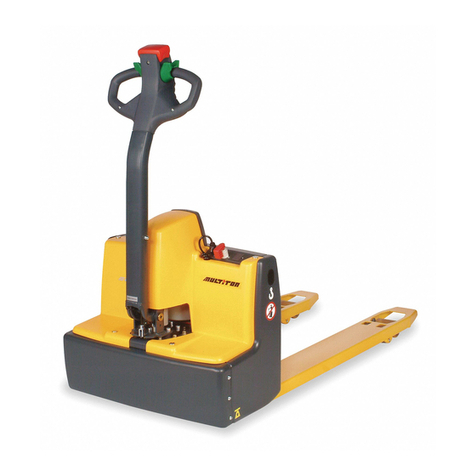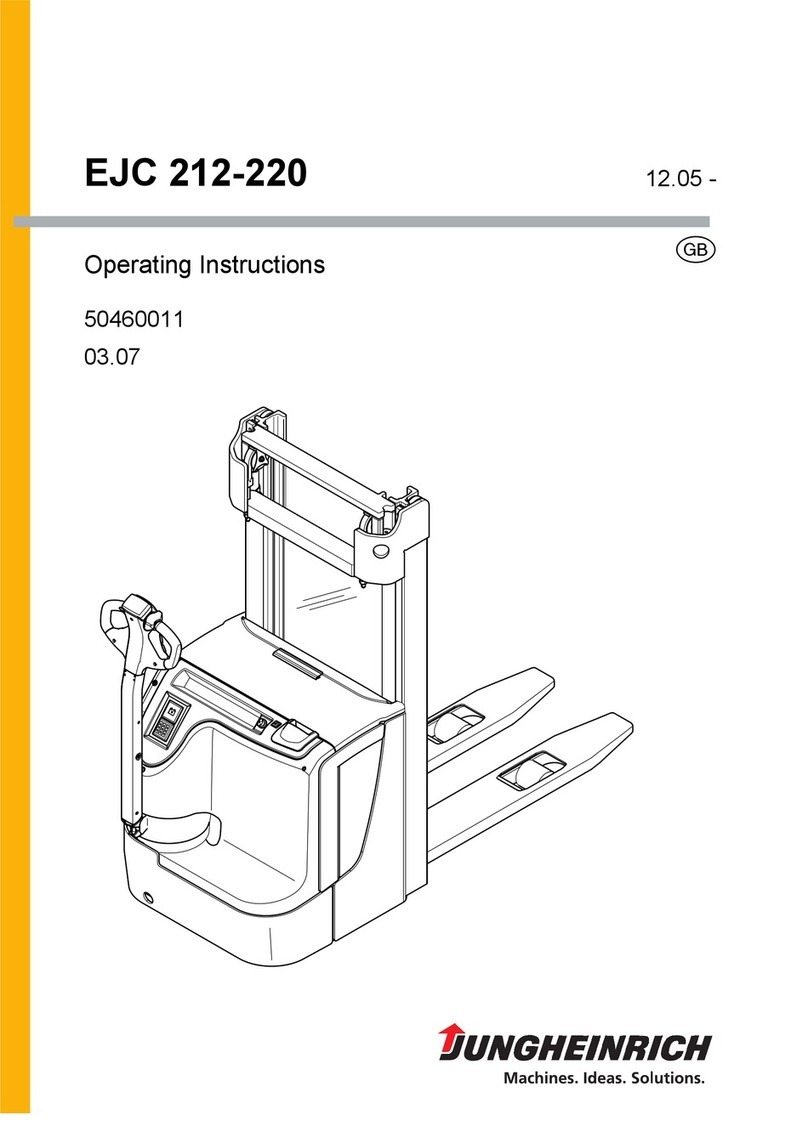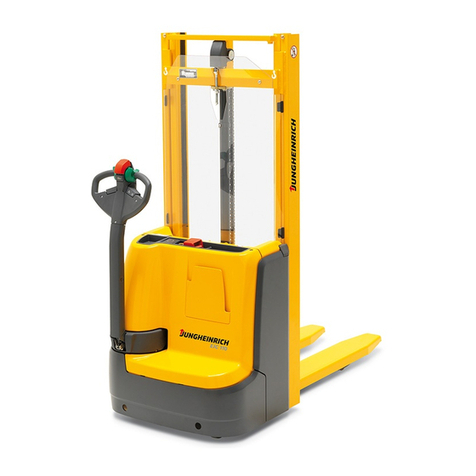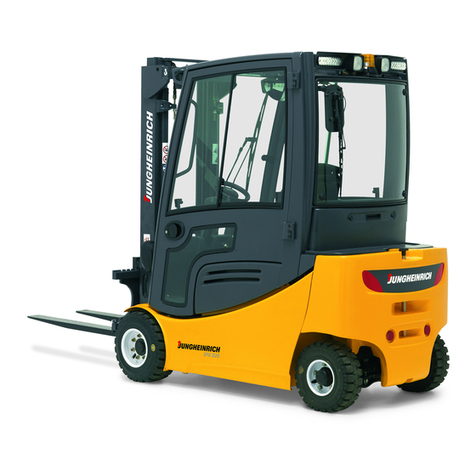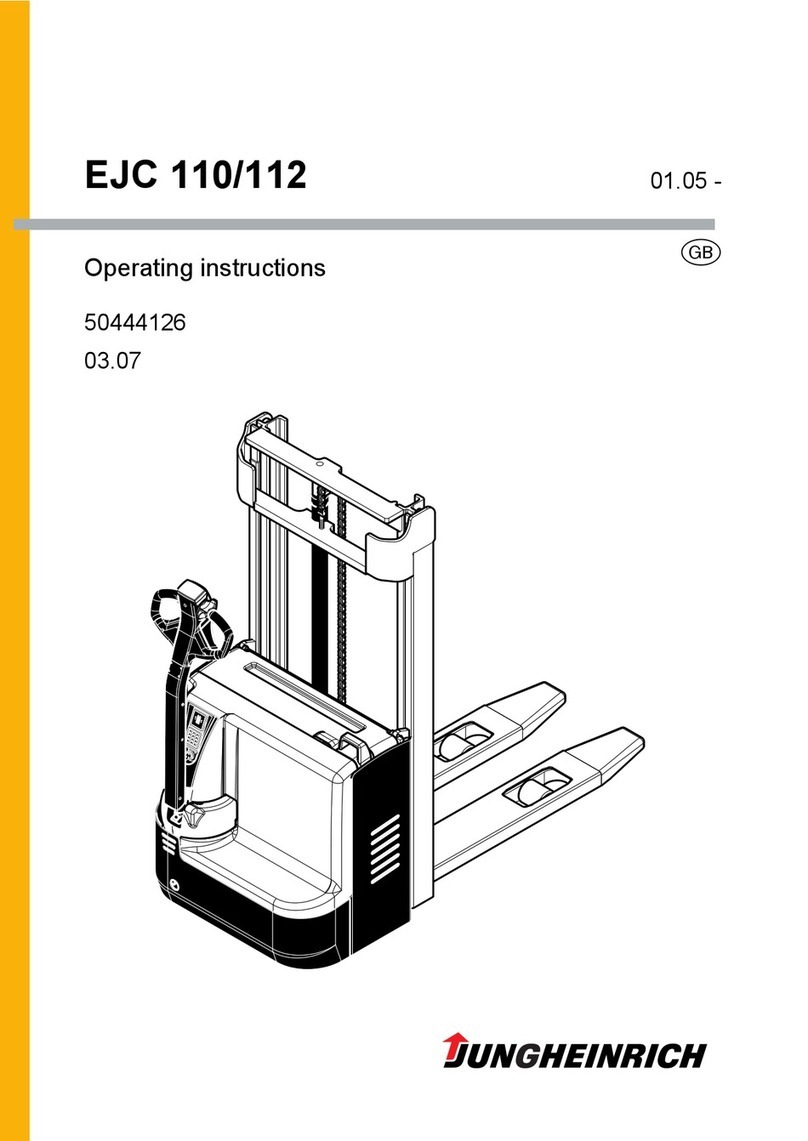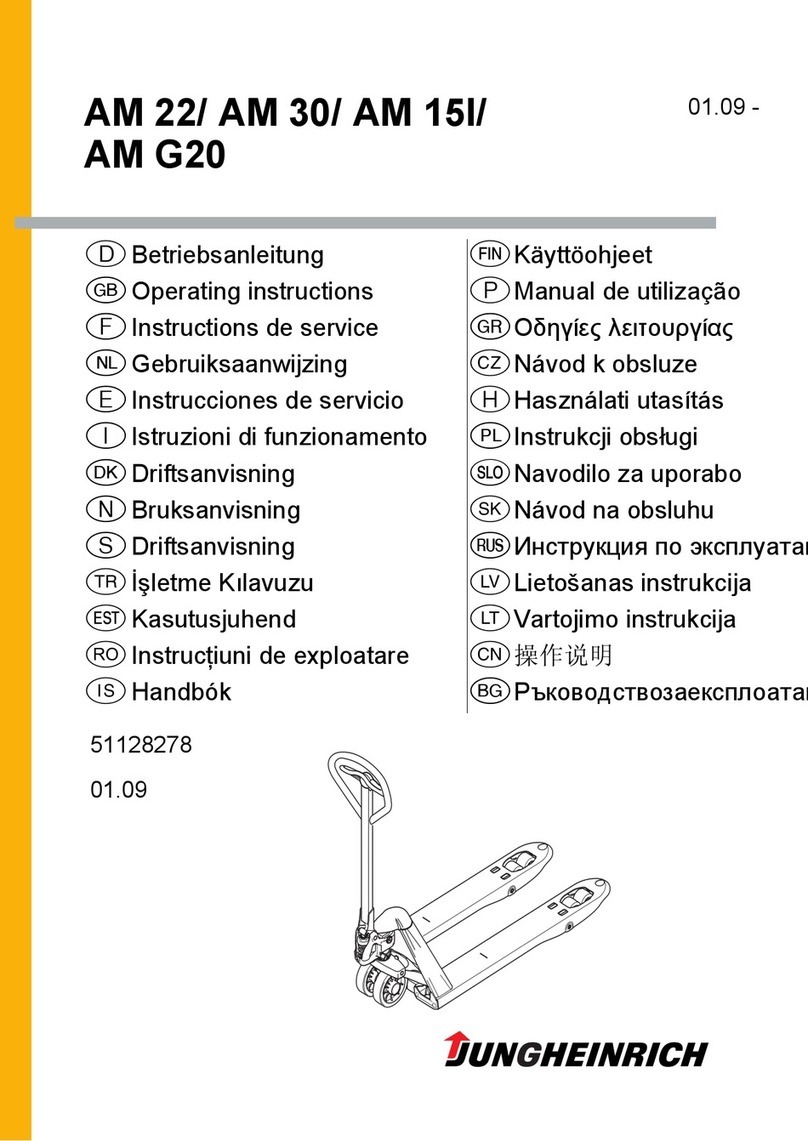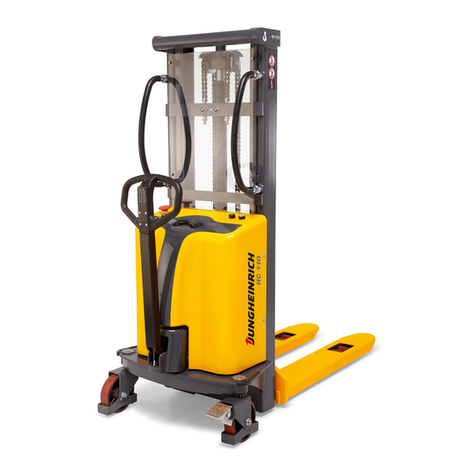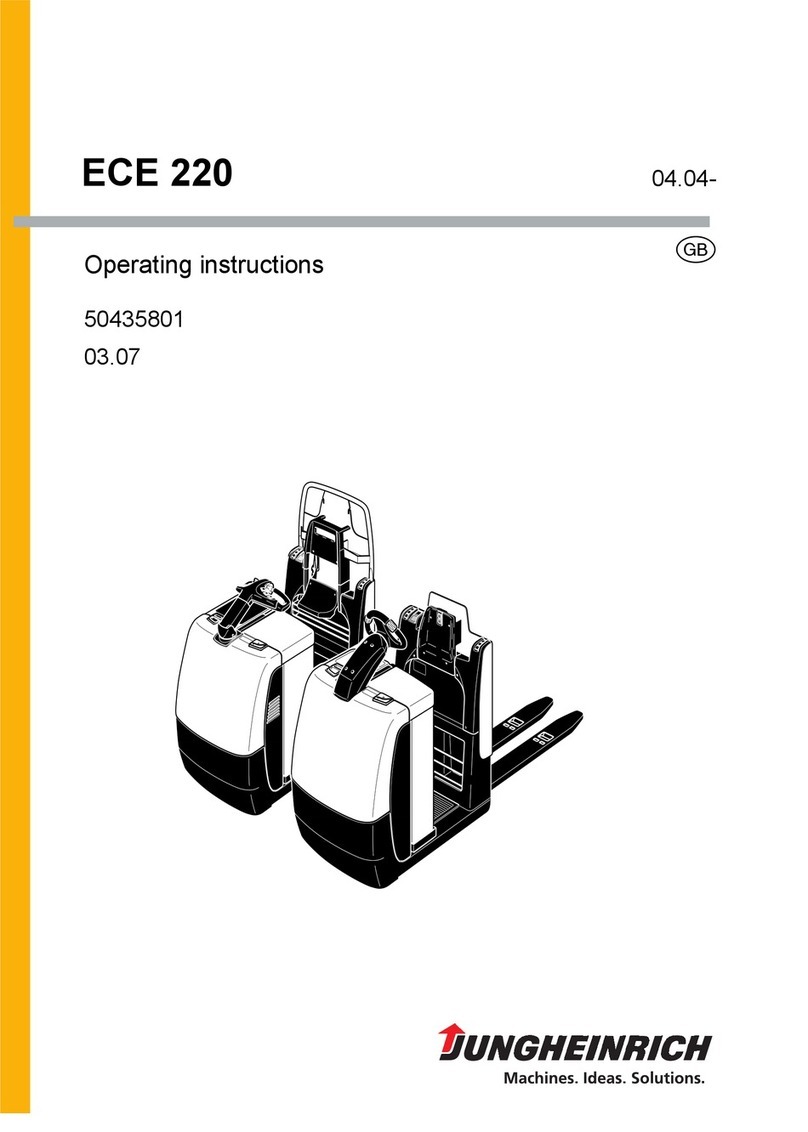
0708.GB
I 2
E Operation
1 Safety regulations for the operation of industrial trucks ...................... E 1
2 Controls and indicators ....................................................................... E 2
3 Starting up the truck ............................................................................ E 4
3.1 Switching on the truck ......................................................................... E 4
4 Industrial truck operation ..................................................................... E 5
4.1 Safety regulations for truck operation ................................................. E 5
4.2 Driving, steering, braking .................................................................... E 6
4.3 Lifting and depositing loads ................................................................. E 9
4.4 Parking the truck securely ................................................................... E 10
5 Keypad (CANCODE) (o) .................................................................... E 11
5.1 Code lock ............................................................................................ E 11
5.2 Travel programs .................................................................................. E 13
5.3 Parameters .......................................................................................... E 13
5.4 Parameter settings .............................................................................. E 14
5.5 Travel parameters ............................................................................... E 18
6 Display instrument (CANDIS) (o) ....................................................... E 21
6.1 Discharge monitor function ................................................................. E 22
6.2 Operating hours display ...................................................................... E 22
6.3 Power up test ...................................................................................... E 22
7 Troubleshooting .................................................................................. E 23
F Truck Maintenance
1 Operational safety and environmental protection ................................ F 1
2 Maintenance safety regulations .......................................................... F 1
3 Servicing and inspection ..................................................................... F 3
4 Maintenance checklist ........................................................................ F 4
5 Maintenance schedule ........................................................................ F 6
5.1 Consumables ...................................................................................... F 7
6 Maintenance and repairs ..................................................................... F 8
6.1 Preparing the truck for maintenance and repairs ................................ F 8
6.2 Opening the battery panel ................................................................... F 8
6.3 Opening the front panel ....................................................................... F 8
6.4 Replacing the drive wheel ................................................................... F 9
6.5 Checking the hydraulic oil level ........................................................... F 9
6.6 Checking electrical fuses .................................................................... F 10
6.7 Recommissioning ................................................................................ F 11
7 Decommissioning the industrial truck .................................................. F 11
7.1 Prior to decommissioning: ................................................................... F 11
7.2 During decommissioning: .................................................................... F 11
7.3 Returning the truck to operation after decommissioning ..................... F 12
8 Safety checks to be performed at regular intervals and
following any unusual incidents ........................................................... F 12
9 Final de-commissioning, disposal ....................................................... F 12
0708.GB
I 2
E Operation
1 Safety regulations for the operation of industrial trucks ...................... E 1
2 Controls and indicators ....................................................................... E 2
3 Starting up the truck ............................................................................ E 4
3.1 Switching on the truck ......................................................................... E 4
4 Industrial truck operation ..................................................................... E 5
4.1 Safety regulations for truck operation ................................................. E 5
4.2 Driving, steering, braking .................................................................... E 6
4.3 Lifting and depositing loads ................................................................. E 9
4.4 Parking the truck securely ................................................................... E 10
5 Keypad (CANCODE) (o) .................................................................... E 11
5.1 Code lock ............................................................................................ E 11
5.2 Travel programs .................................................................................. E 13
5.3 Parameters .......................................................................................... E 13
5.4 Parameter settings .............................................................................. E 14
5.5 Travel parameters ............................................................................... E 18
6 Display instrument (CANDIS) (o) ....................................................... E 21
6.1 Discharge monitor function ................................................................. E 22
6.2 Operating hours display ...................................................................... E 22
6.3 Power up test ...................................................................................... E 22
7 Troubleshooting .................................................................................. E 23
F Truck Maintenance
1 Operational safety and environmental protection ................................ F 1
2 Maintenance safety regulations .......................................................... F 1
3 Servicing and inspection ..................................................................... F 3
4 Maintenance checklist ........................................................................ F 4
5 Maintenance schedule ........................................................................ F 6
5.1 Consumables ...................................................................................... F 7
6 Maintenance and repairs ..................................................................... F 8
6.1 Preparing the truck for maintenance and repairs ................................ F 8
6.2 Opening the battery panel ................................................................... F 8
6.3 Opening the front panel ....................................................................... F 8
6.4 Replacing the drive wheel ................................................................... F 9
6.5 Checking the hydraulic oil level ........................................................... F 9
6.6 Checking electrical fuses .................................................................... F 10
6.7 Recommissioning ................................................................................ F 11
7 Decommissioning the industrial truck .................................................. F 11
7.1 Prior to decommissioning: ................................................................... F 11
7.2 During decommissioning: .................................................................... F 11
7.3 Returning the truck to operation after decommissioning ..................... F 12
8 Safety checks to be performed at regular intervals and
following any unusual incidents ........................................................... F 12
9 Final de-commissioning, disposal ....................................................... F 12
